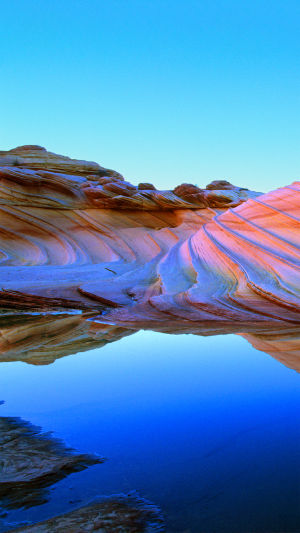Sandstone is a kind of stone which can be used as a building material.
Its main components are SiO2 and Al2O3, which are formed by heating and pressure in the process of geological changes after masking the original terrain of a large number of accumulated sand layers through marine and continental deposits.
Sandstone is divided into sea sandstone and mud sandstone; the stone composition and structure of sea sandstone are thicker and harder than mud sandstone, and its porosity is larger and more brittle. As a stone engineering plate, it is impossible to be very thin; the thickness specification of the decoration board is generally 15mm to 25mm, with the main representative varieties being Australian sandstone and Spanish sandstone.
The mudstone is more delicate, the hardness is slightly softer than the sea sandstone, and the pattern changes peculiarly, just like tree rings, wood patterns and landscape painting in nature; it is a good variety for walls, ground decoration and profiles.
Mudstone has plasticity similar to plastic, making it more suitable for carving and cutting thin plates with 10mm thickness. Concerning the slight plasticity of sandstone, it is now generally believed that there is a molecular connection between SiO2, rather than caking.
The water absorption of sandstone is very large, with some varieties almost absorbing water into the stone. Due to its large porosity in its internal structure, sandstone has the characteristics of sound absorption, moisture absorption, fire prevention, and a matte finish. This characteristic is often used in public places such as theatres, gymnasiums, and restaurants with sound absorption requirements, and the effect is very ideal, even eliminating the need for sound absorption boards and brushing walls. How is the beautiful pattern of sandstone formed?
Now the common view is that when the sandstone is not yet formed, the impact of water and the traces left after the impact, as well as other mineral morphological changes, are the main reasons for the formation of the pattern.
Sandstone is characterized by good sound insulation as a building material, being resistant to outdoor weathering, insoluble in water, and having no moss, making it easy to clean.
For example, the MAS Museum is made of sandstone. The advantages of sandstone include being a high-quality natural stone without light pollution and radiation, being moisture-proof, skid-proof, sound-absorbing, light-absorbing, tasteless, radiation-free, non-fading, and warm in winter and cool in summer. Compared to wood, it does not crack, deform, decay, or fade.
For simplifying product installation, marble glue can be used to fix the carving to the wall, allowing the product to be organically connected with wood decoration, creating a perfect background modelling space, and overcoming the tedious traditional installation of stone while reducing installation costs.
The house can install the carvings on the wall without adding any other processes or paint.





